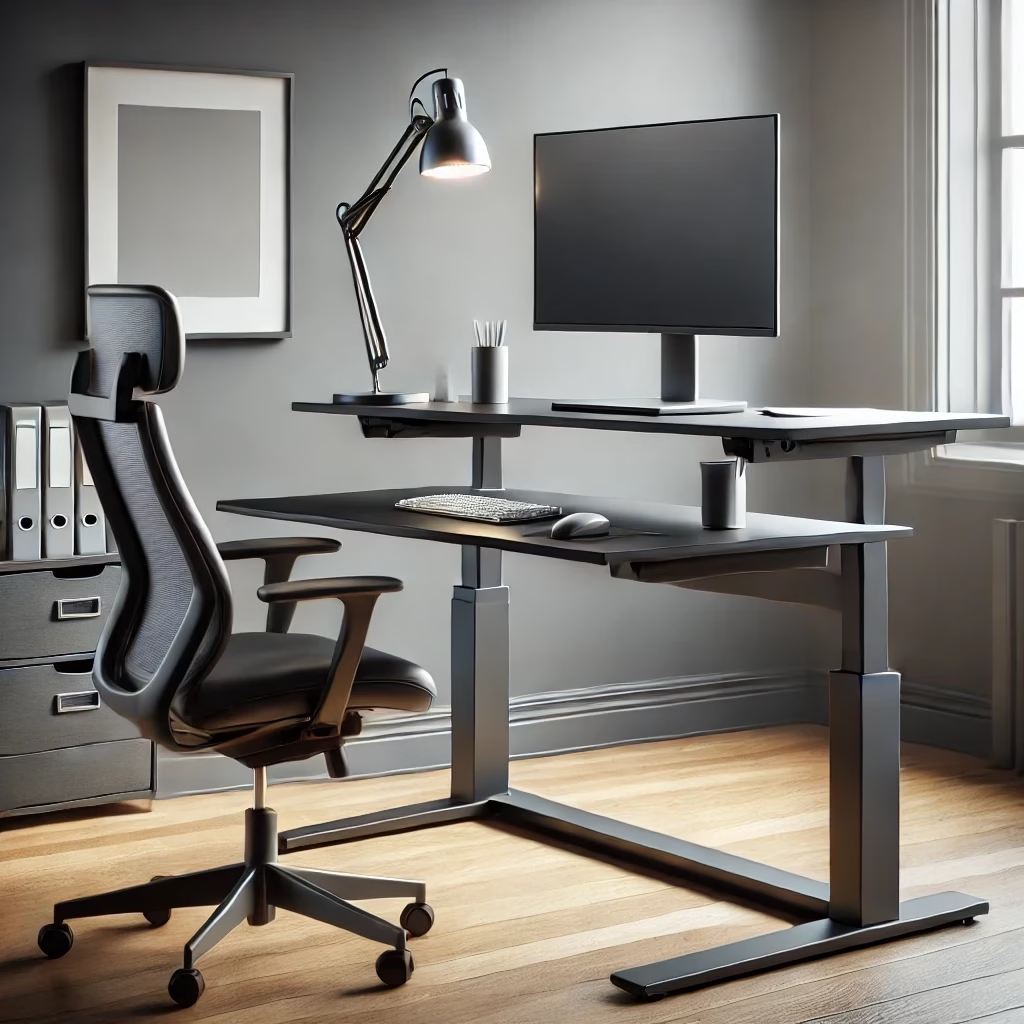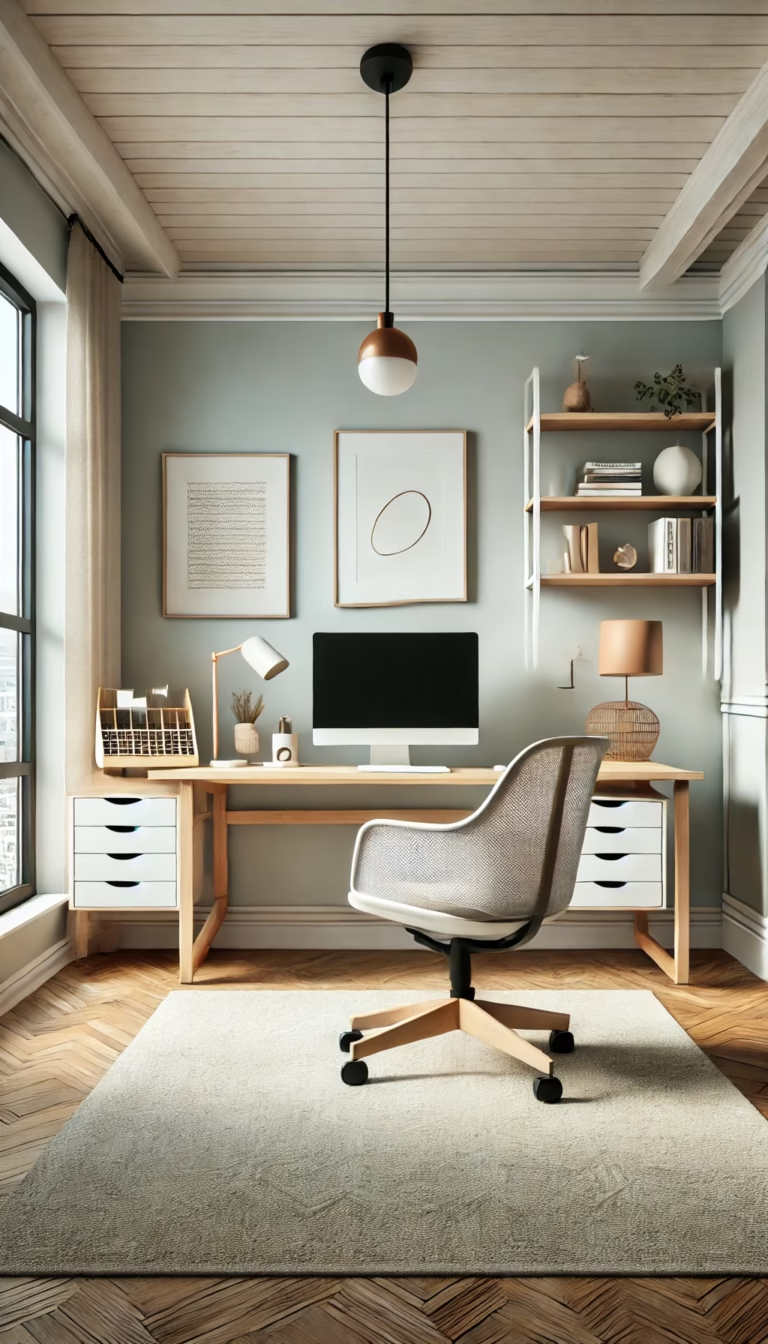The Ultimate Guide to Standing Desks: Boosting Health and Productivity
In today’s increasingly sedentary work culture, standing desks have emerged as a popular solution to combat the negative health effects of prolonged sitting. A standing desk allows users to work while standing, improving circulation, reducing sedentary behavior, and promoting better posture. In this comprehensive guide, we’ll explore the benefits of standing desks, the different types available, and how to choose the right one for your needs.
What is a Standing Desk?
A standing desk is a desk designed to allow users to work while standing. Unlike traditional desks, standing desks are adjustable, enabling users to switch between sitting and standing positions throughout the day. This flexibility helps reduce the risks associated with prolonged sitting, such as poor circulation, back pain, and musculoskeletal disorders.
The Importance of Reducing Sedentary Behavior
Sedentary behavior, such as sitting for long periods, has been linked to a range of health issues, including obesity, cardiovascular disease, and type 2 diabetes. According to a study published in the Annals of Internal Medicine, reducing sedentary time can significantly improve overall health and reduce the risk of chronic diseases (Diaz et al., 2017). Standing desks are an effective way to incorporate more movement into your workday and reduce sedentary behavior.

Types of Standing Desks
Standing desks come in various types, each with unique features and benefits. Here’s a breakdown of the most common types:
1. Electric Standing Desks
Electric standing desks are powered by motors that allow users to adjust the desk height with the push of a button. These desks are highly convenient and often come with programmable height settings for multiple users.
Pros: Easy to adjust, customizable height settings, smooth operation.
Cons: Higher cost, requires access to power outlets.
2. Manual Standing Desks
Manual standing desks are adjusted using a crank or lever. While they require more effort to adjust than electric desks, they are often more affordable and don’t rely on electricity.
Pros: Cost-effective, no need for power, durable.
Cons: Less convenient, slower to adjust.
3. Full Standing Desks
Full standing desks are complete desk replacements that provide ample workspace for monitors, keyboards, and other office essentials. They are ideal for users who want to fully commit to a standing desk setup.
Pros: Spacious, ergonomic, suitable for long-term use.
Cons: Takes up more space, higher cost.
4. Partial Standing Desks (Desktop Risers)
Partial standing desks, also known as desktop risers, sit on top of an existing desk to elevate your workspace. These are a great option for those who want to try a standing desk without replacing their current desk.
Pros: Affordable, portable, easy to install.
Cons: Limited workspace, less stable than full desks.

Benefits of Using a Standing Desk
1. Improved Circulation
Standing desks promote better blood flow, reducing the risk of swelling and discomfort in the legs and feet. A study published in the Journal of Physical Activity and Health found that using a standing desk significantly improved circulation and reduced fatigue (Thorp et al., 2014).
2. Reduced Sedentary Behavior
Standing desks encourage movement and reduce the amount of time spent sitting. This can lower the risk of chronic diseases associated with sedentary behavior, such as obesity and cardiovascular disease.
3. Enhanced Posture and Reduced Back Pain
Standing desks promote better posture by encouraging users to stand upright. This can alleviate back pain caused by slouching in a chair. A study in the Journal of Ergonomics found that standing desks reduced lower back pain and improved posture among office workers (Chau et al., 2016).
4. Increased Productivity
Many users report feeling more alert and productive when using a standing desk. A study published in the Journal of Occupational and Environmental Medicine found that employees who used standing desks experienced higher levels of focus and productivity (Pronk et al., 2016).

How to Choose the Right Standing Desk
When selecting a standing desk, consider the following factors:
1. Adjustability
Look for a desk that allows you to easily switch between sitting and standing positions. Electric desks are the most convenient, but manual options are also effective.
2. Workspace Size
Ensure the desk provides enough space for your monitor, keyboard, and other essentials. Full standing desks offer the most workspace, while desktop risers are more compact.
3. Stability
Choose a desk that is sturdy and can support your equipment without wobbling. Electric and full standing desks tend to be more stable than desktop risers.
4. Budget
Standing desks range in price from affordable desktop risers to high-end electric models. Determine your budget and choose a desk that offers the best value for your needs.
Conclusion
A standing desk is a powerful tool for improving your health and productivity. By reducing sedentary behavior, promoting better posture, and enhancing circulation, standing desks can transform your workday. Whether you opt for an electric, manual, full, or partial desk, the key is to find a solution that fits your workspace and lifestyle.
Take the first step toward a healthier work environment by investing in a standing desk today. Your body—and your productivity—will thank you!
References
- Diaz, K. M., Howard, V. J., Hutto, B., Colabianchi, N., Vena, J. E., Blair, S. N., & Hooker, S. P. (2017). Patterns of sedentary behavior and mortality in U.S. middle-aged and older adults. Annals of Internal Medicine, 167(7), 465-475. Link
- Thorp, A. A., Kingwell, B. A., Owen, N., & Dunstan, D. W. (2014). Breaking up workplace sitting time with intermittent standing bouts improves fatigue and musculoskeletal discomfort in overweight/obese office workers. Journal of Physical Activity and Health, 12(6), 1274-1283. Link
- Chau, J. Y., Daley, M., Dunn, S., Srinivasan, A., Do, A., Bauman, A. E., & van der Ploeg, H. P. (2016). The effectiveness of sit-stand workstations for changing office workers’ sitting time: Results from the Stand@Work randomized controlled trial pilot. Journal of Ergonomics, 59(6), 787-795. Link
- Pronk, N. P., Katz, A. S., Lowry, M., & Payfer, J. R. (2016). Reducing occupational sitting time and improving worker health: The Take-a-Stand Project, 2011. Journal of Occupational and Environmental Medicine, 58(5), 483-489. Link







